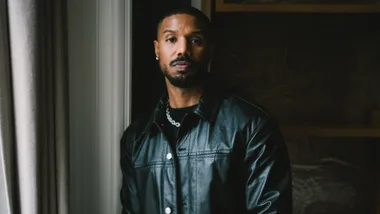Tattoo stigma has changed dramatically over the years. What was once a mark of subculture allegiance, is now the epitome of ‘cool’. In fact, these days, you’d be hard pressed to find a red carpet event dry of inked celebrities and influencers.
With the rising popularity, the tattoo industry has moved out of dingy back alleyways and into the main street, bringing with it a credible career option for budding artists everywhere.
So, how does one enter the notoriously tough tattoo artist industry?
The simple answer: you dive right in.
The real answer: you dive right in…to hours of practice, training, and apprenticeships.
While it might look effortless on Instagram, becoming a tattoo artist isn’t easy. If you’re willing to put in the work, however, it can be a very rewarding pursuit.
Here are eight things you need to do before you can become a full-fledged professional tattoo artist.
RELATED: Our Favourite Celebrity Tattoos
1. Practice Your Art Skills
Not all artists can tattoo. But all tattoo artists should, well, actually know how to draw. That means you have to cultivate your actual art skill in real life. Practice as much as you can. Learn the basics of both traditional and digital visual art. It will come in handy, trust us.
No, tattooing isn’t just about tracing lines. Most clients will want a custom-made piece that you have to design yourself. And even if you’re tattooing a pre-made design, your work will benefit greatly from the skill and discipline you’ll develop as an artist.
2. Know What Makes A Good Tattoo Artist
While tattooing is an art, there’s definitely much more to it than that.
You’ll also have to know a little bit about the business. As a tattoo artist, you’ll be in charge of handling your clients, pricing your work, scheduling sessions, and – if you work independently – running your own shop.
You’ll also need some medical knowledge because tattooing can be risky if you don’t know what you’re doing.
Finally, you may need to take on the role of friend or therapist. Some clients will come in asking you to tattoo something very personal, and they may want to talk about it. Or they may not. But we guarantee you’ll have to break out the charm and empathy at least once in your career.
3. Take Training Courses
As we said earlier, if you really want to become a tattoo artist, you need to put in the work. That means taking it seriously and learning how to practice tattooing from actual industry professionals.
Many major cities and even some universities will offer tattoo training classes. Here, you’ll learn the history, theories, and fundamentals of proper tattooing. You’ll also learn about the safety practices necessary to minimise the many risks of tattooing, and how to instruct your clients on proper tattoo aftercare.
If you can’t find a course near you (or can’t afford hundreds of dollars in tuition), don’t fret. There are tons of online classes that you can take at home.
4. Get A Tattoo Apprenticeship
The best way to actually learn how to draw tattoos is by doing it. During an apprenticeship, you will work with a tattoo artist whose work you (ideally) admire. They will show you the ropes, and you’ll sneak a real peek into the day-to-day of an actual tattoo artist.
Apprenticeships can take years, and in some cases they’re unpaid, but you’ll get something that money can’t buy: experience. You’ll tattoo clients under the watchful eye of your mentor, get real-time guidance, and develop your skills in the real world.
5. Get Licensed
A tattoo licence is required of all tattoo artists who want to practice professionally and for compensation.
The requirements aren’t all that difficult, but it depends on the state you live in. Most of the time, you’ll just need ID, a National Police Check, and details about your past and current employment. You’ll also need to pay a small application fee and fill out a form.
6. Set Your Expectations
Your salary as a tattoo artist depends on many things, such as your reputation, your location, how many clients you work with, and how you price your tattoos. The average pay for a tattoo artist is $AUD17.70 an hour, but the most popular artists can earn over a hundred grand a year.
Starting out, you can expect to work for lower rates or even for free (as an apprentice). But as you build your portfolio and your confidence, you’ll be able to charge more, attract new clients, and earn a decent, steady income doing what you love.
7. Learn How To Say ‘No’
At first, you probably shouldn’t (or wouldn’t) say ‘no’ to any client. After all, money is hard to come by. But throughout your career, there will be times that you’ll be asked to do tattoo drawings that make you uncomfortable or don’t fit your aesthetic.
If you’re in a place financially that you can reject that kind of work, don’t feel bad about rejecting it. As a tattoo artist, you know good tattoos from bad tattoos. And a person, you know your boundaries. If you disagree with the message of a tattoo or if you just don’t want your name to be associated with the design, saying no can save you from a lot of regret in the future.
8. Reach Out To Other Tattoo Artists
There is a huge tattoo community – make the most out of it! Find artists you like on Instagram and take inspiration from their work. Post your own work online. Network with shops and artists. Go to your local tattoo convention.
These are ways to not only get your name out there and potentially get some new clients but also to make valuable connections and friendships. You can swap tips, get client referrals, or even land a job at a tattoo shop. The possibilities are endless if you open up to others and share your joy of tattooing.










